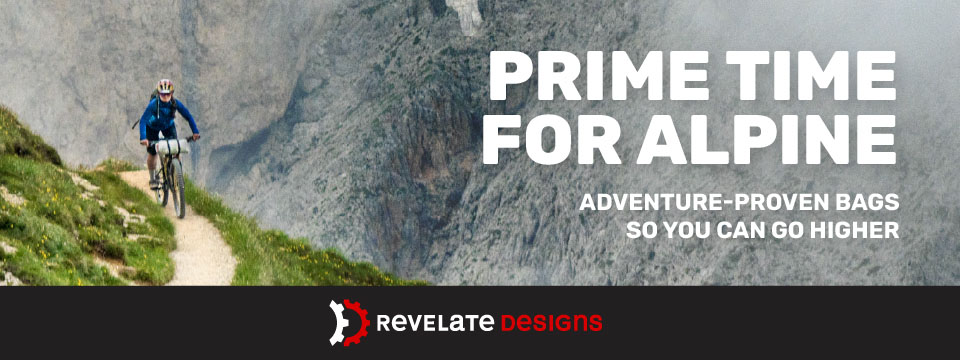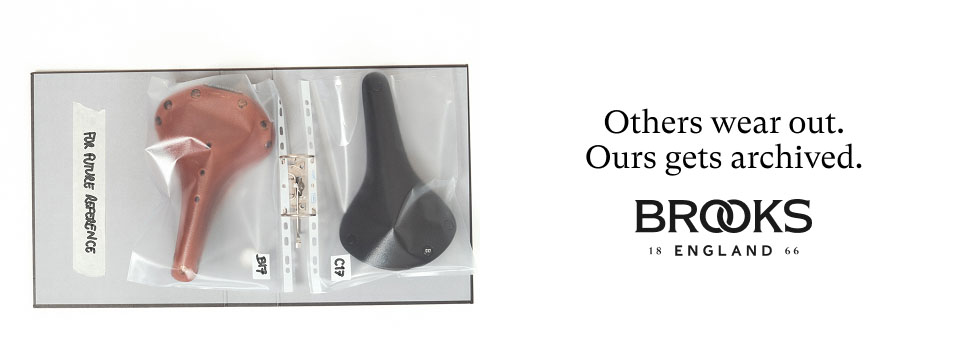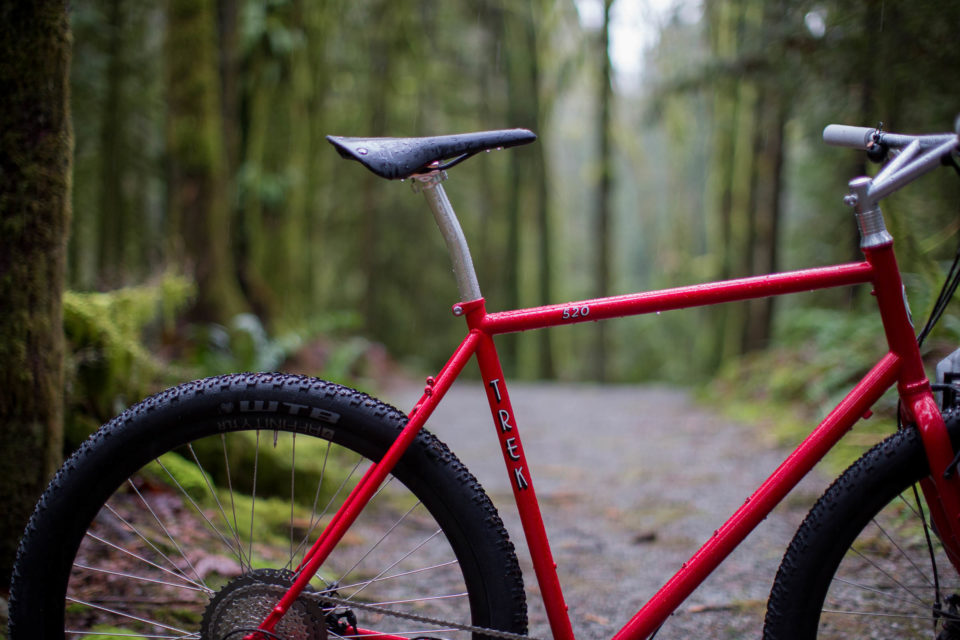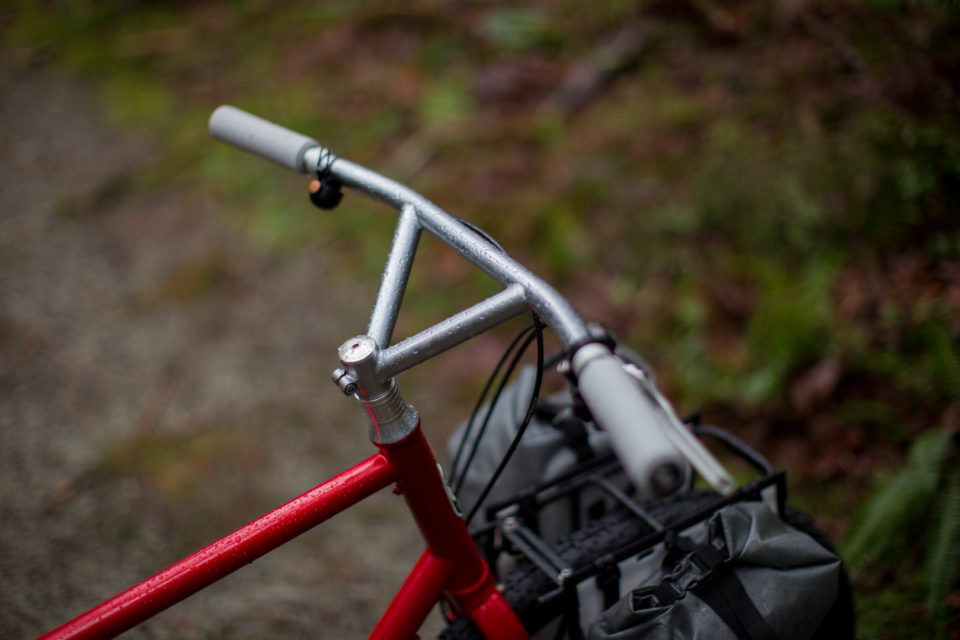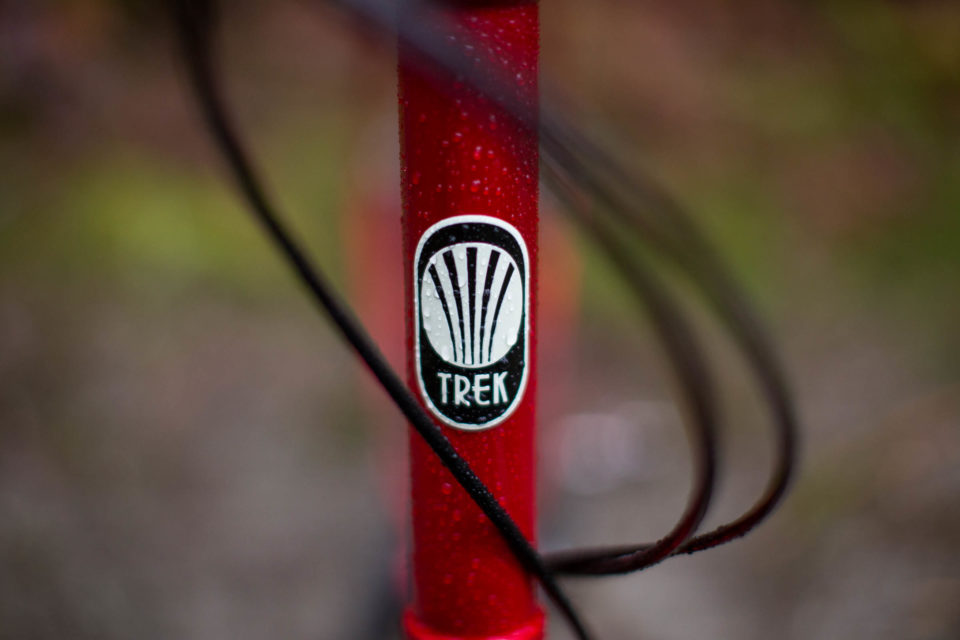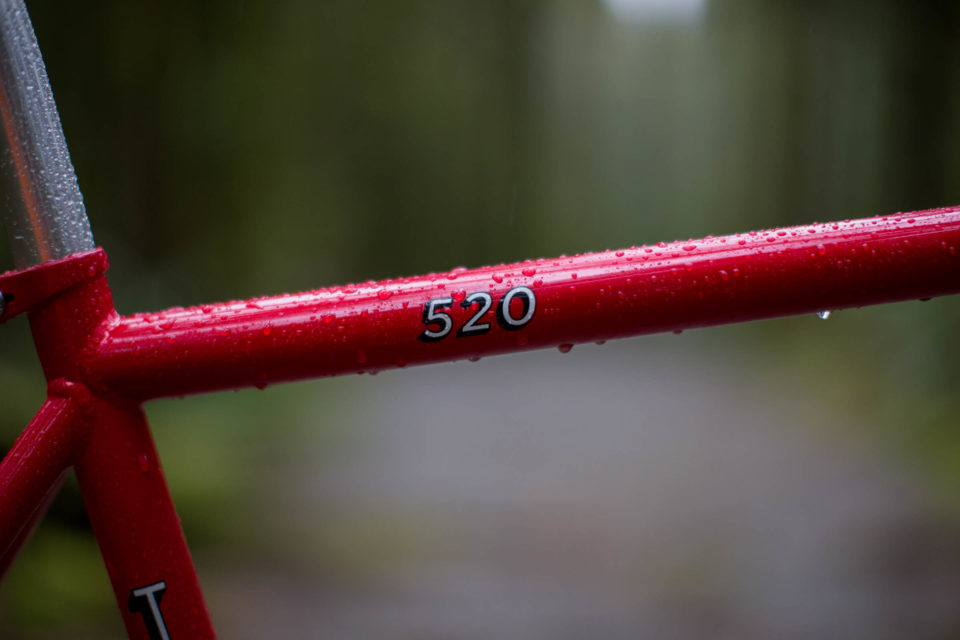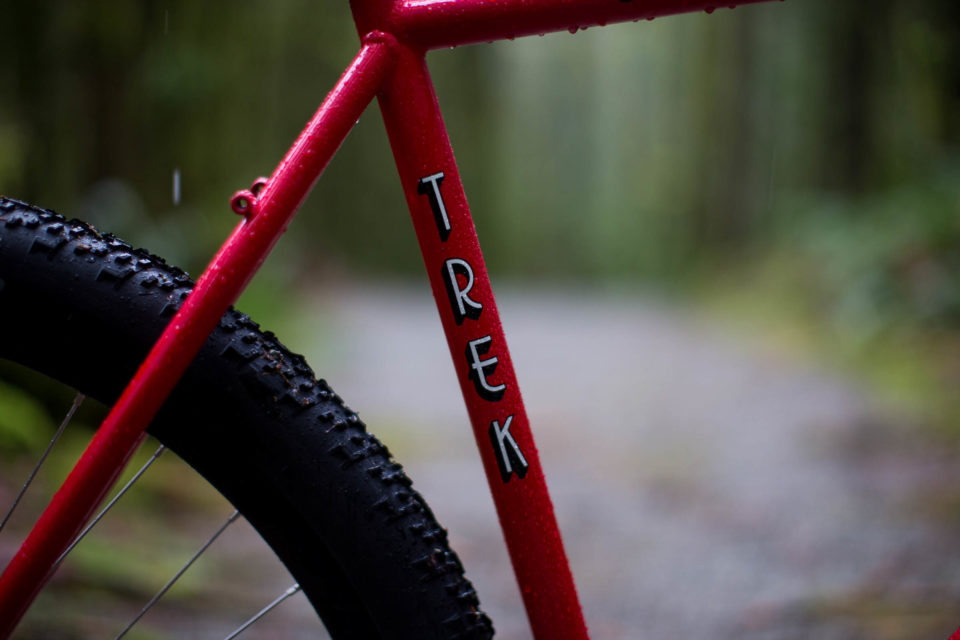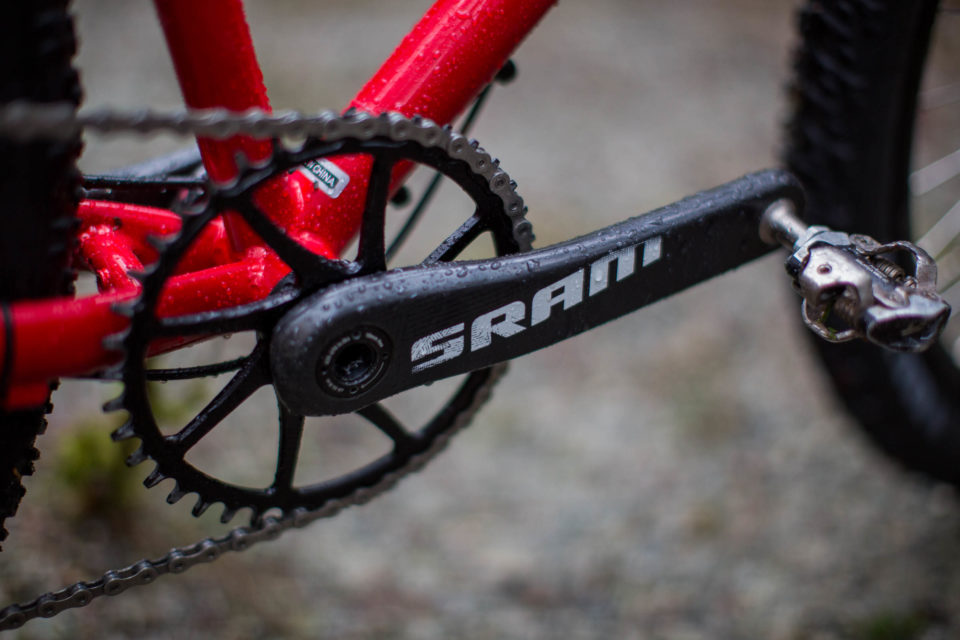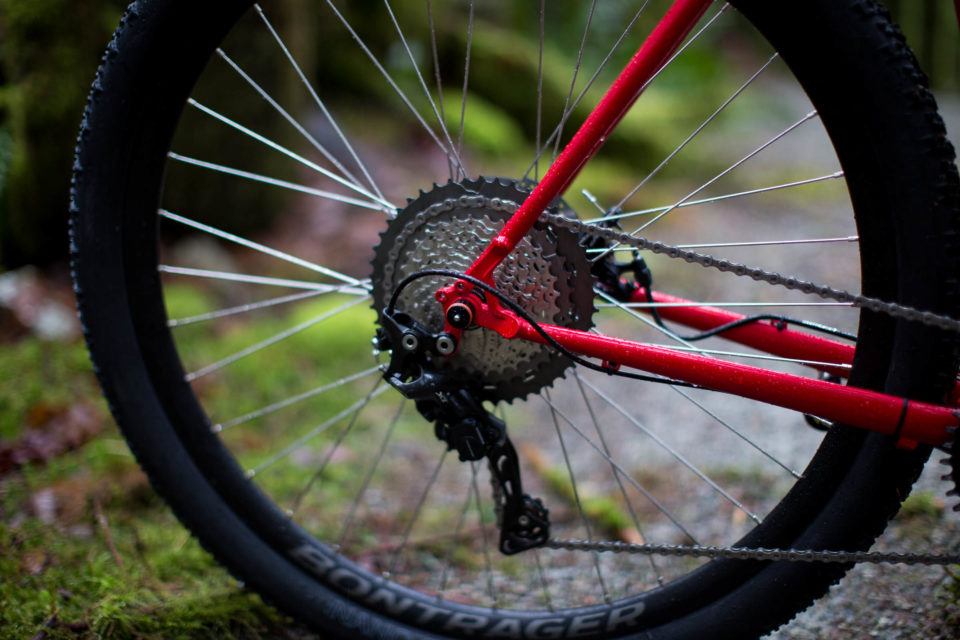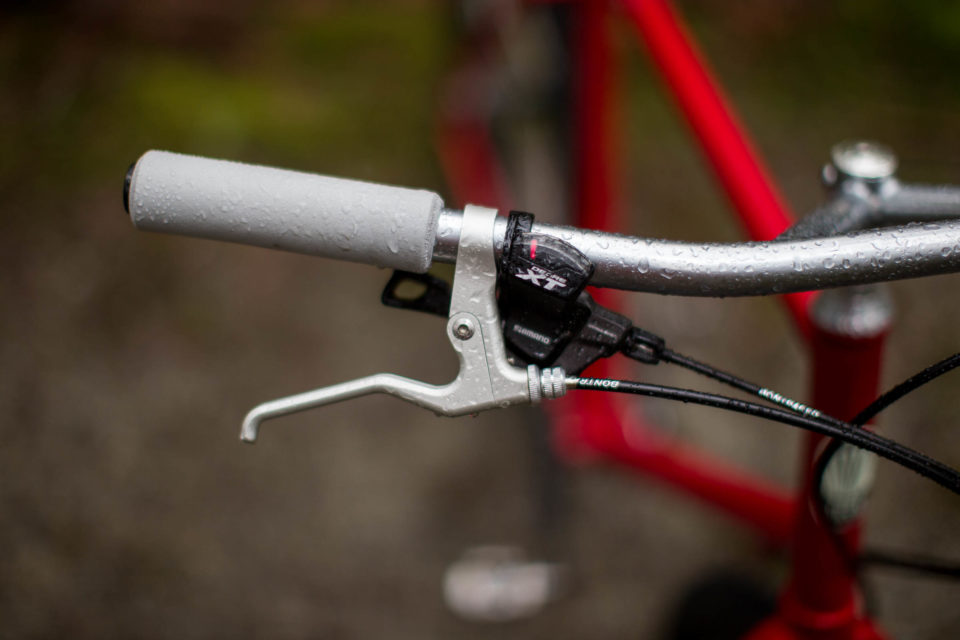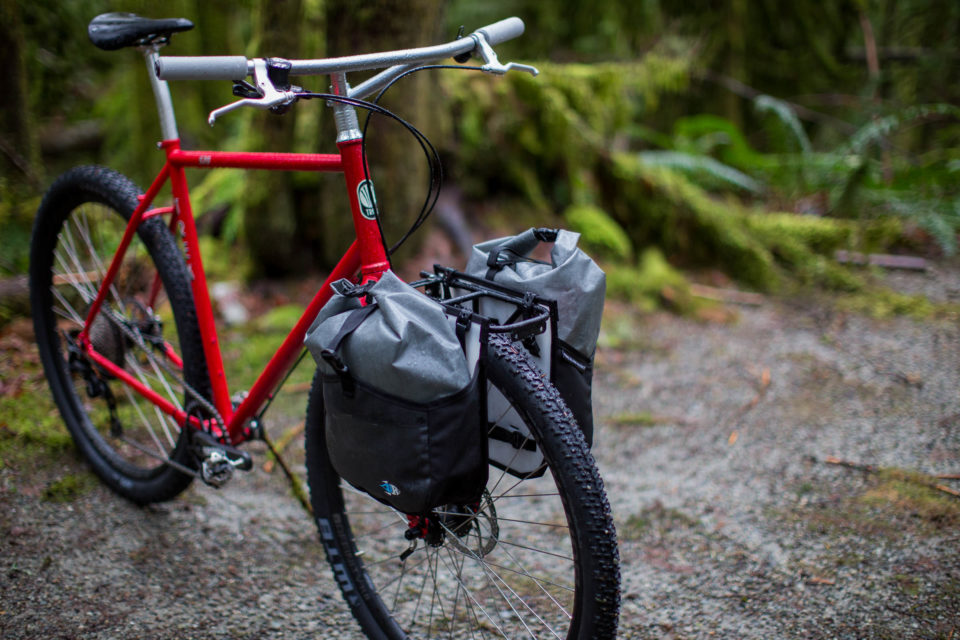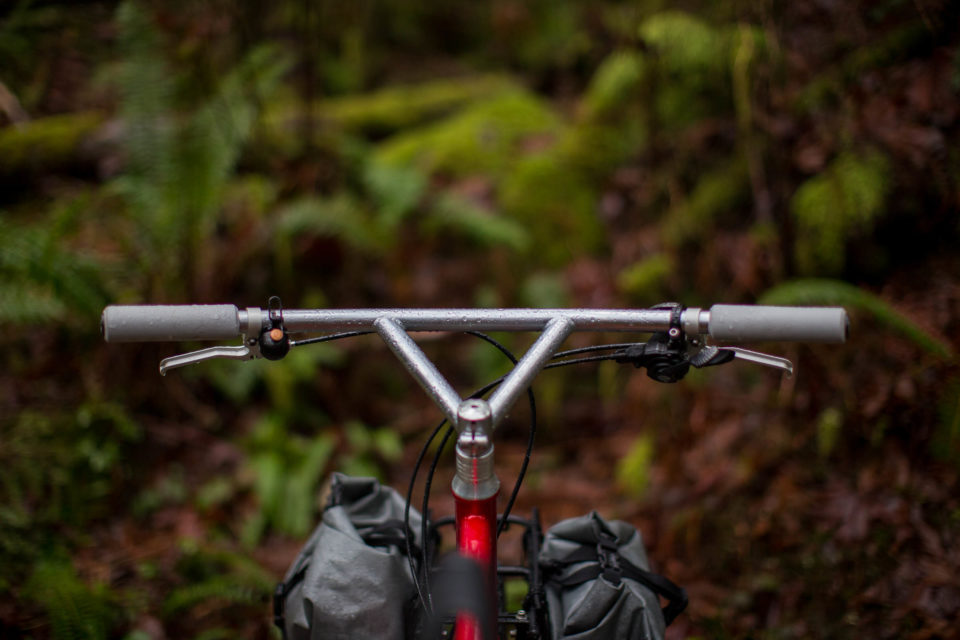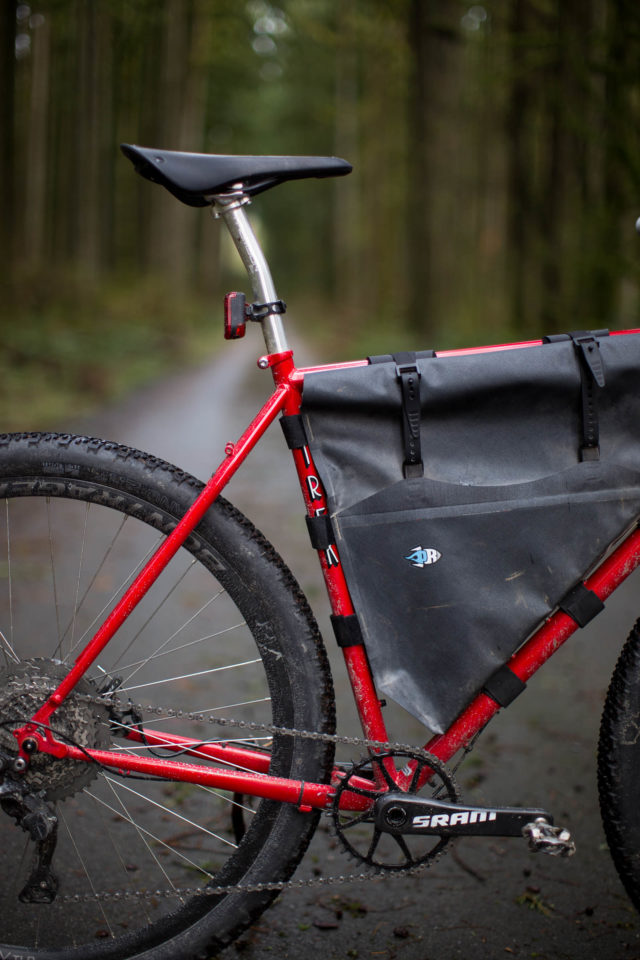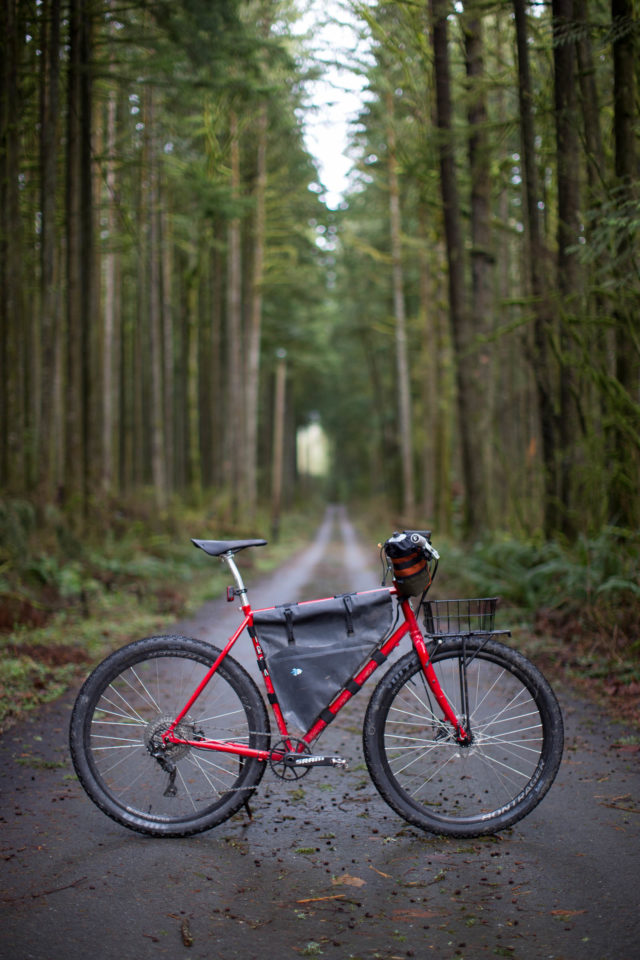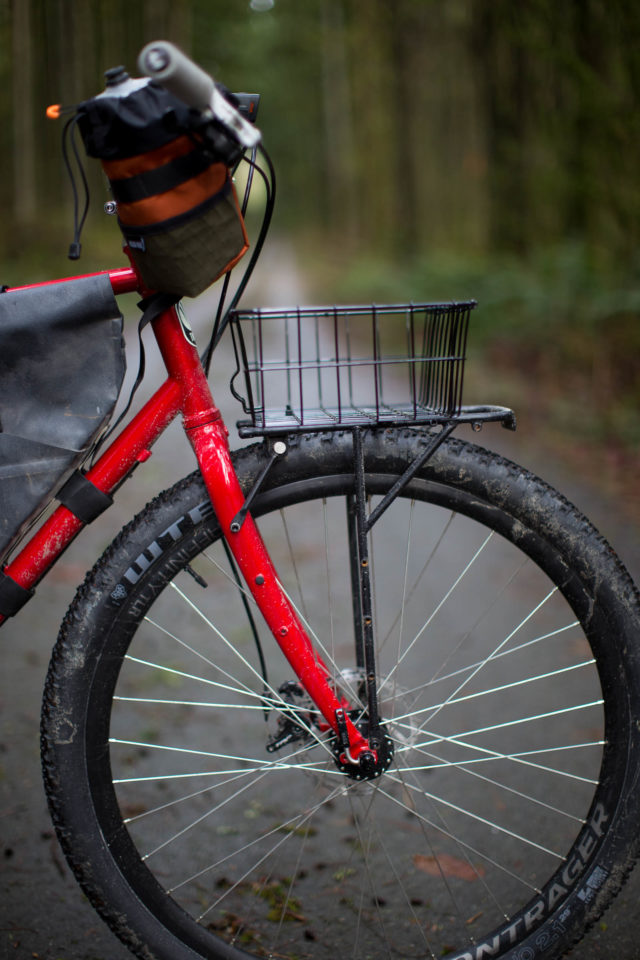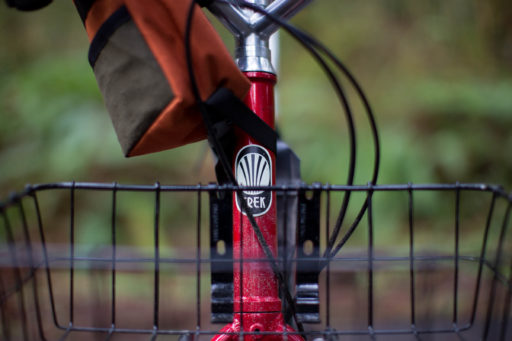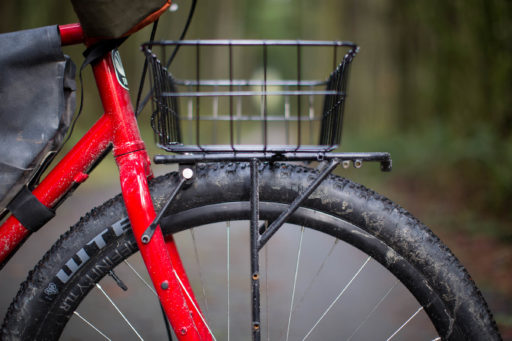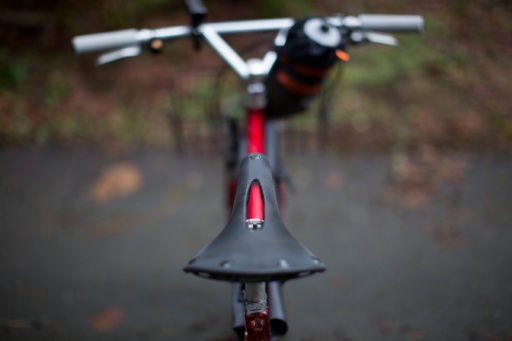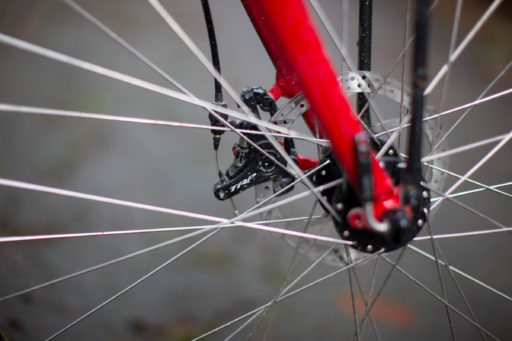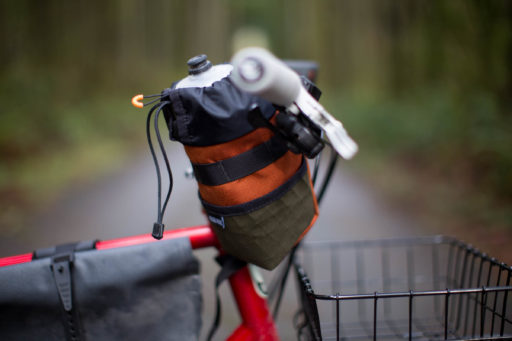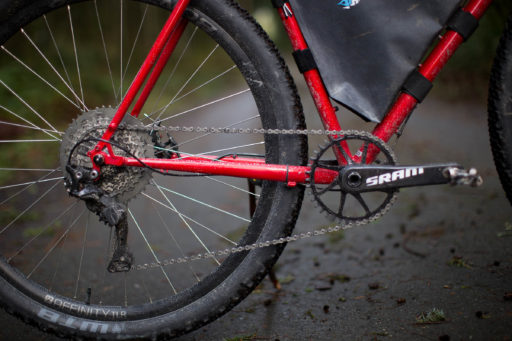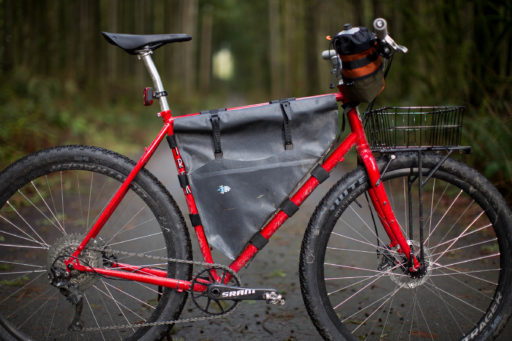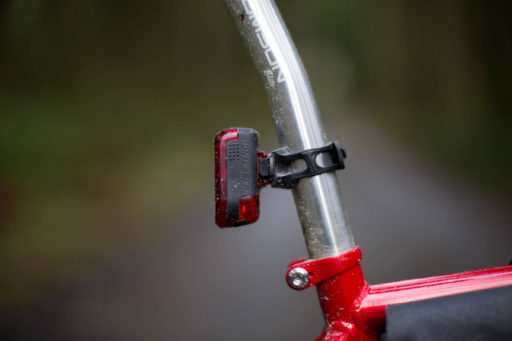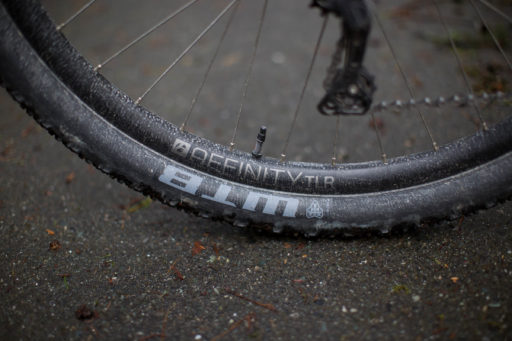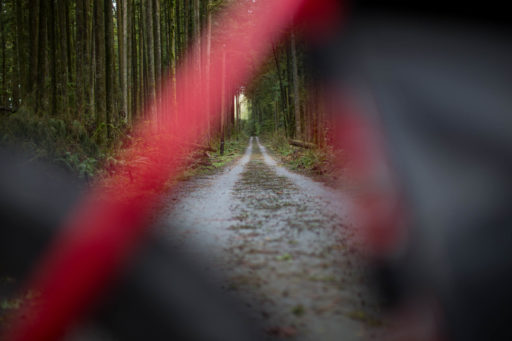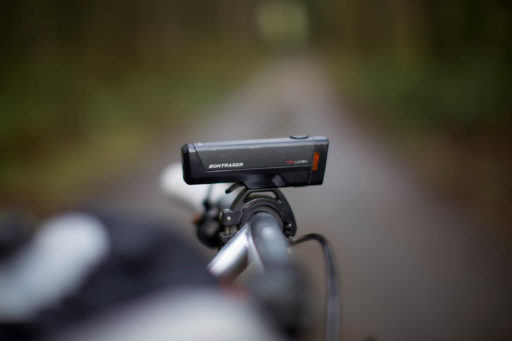Miles’ Flat Bar Trek 520: Little Red Corvette
The stock Trek 520, the quintessential steel touring bike in the brand’s lineup, wasn’t quite doing it for Miles. Here is his take on a classic, complete with a flat bar conversion, 1×11 drivetrain, and the absolute biggest tires he could fit. Find details, lots of photos, and a complete build kit here…
PUBLISHED Feb 7, 2020
I’ve been slowly moving away from drop-bar bikes over the last year, at least when it comes to my personal bikes. I recognize their importance and benefit, but I’m beginning to think that I’d rather have a nice big tire and a flat bar for the majority of terrain I encounter. So I set out to take a perfectly reasonable drop-bar touring bike—steel, of course—and convert it over to something better suited to my current tastes. Enter the Trek 520.
First offered in 1983, the 520 is Trek Bicycles’ longest running model, and for good reason. Just take this description of the 520 from the April 1985 edition of Bicycling Magazine, “Many people who buy loaded touring bikes built to slog half their worldly possessions over the Continental Divide never haul more than a couple of bananas, a rain cape, and a patch kit. Trek hopes its new $499 ‘credit card touring bike,’ the 520, will appeal to these folks who want a hill-leveling triple crankset but don’t need the extra weight and slow handling of a typical touring frame.” Whoever wrote this deserves a high-five.
Its chromoly steel frame, various mounts, and vintage graphics had me scheming. I envisioned a flat bar 520, 29″ tires, and a wide range 1×11 drivetrain: a steel rambler perfect for commuting to work, exploring gravel pathways, and some loaded bikepacking. With the help from some friends’ parts bins, a few kind shop owners, and Dorset, UK-based Sven Cycles; who found a Nitto handlebar in his shop that wasn’t in use, I made it happen. It’s not a particularly expensive or over the top build, but has the look of something boutique that you might spot at your local coffee outside ride. More importantly, it’s really fun to ride.
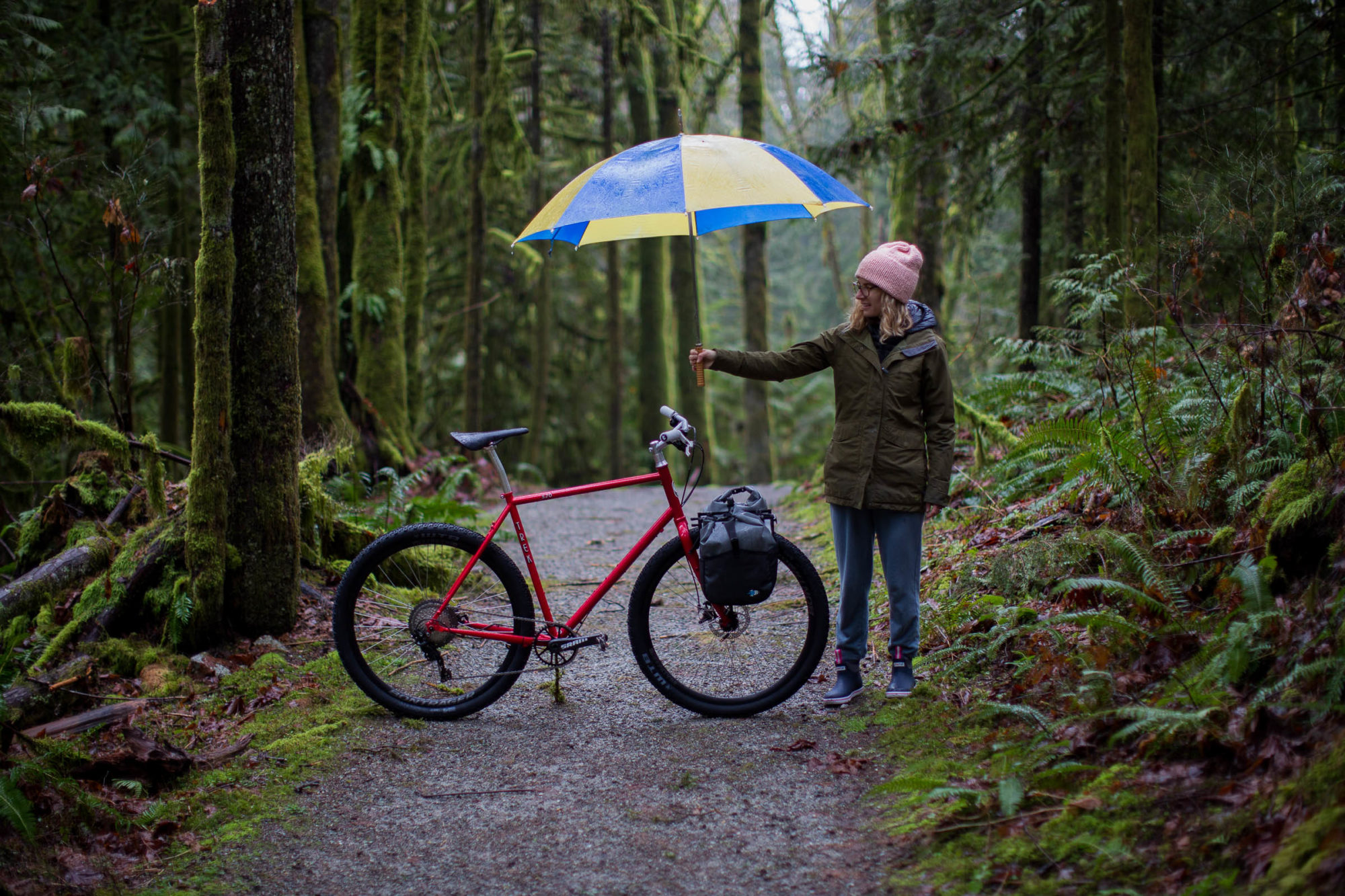
Trek 520 Build Kit
In hindsight, I could have saved some time spent trading parts around by simply purchasing a frameset, instead of a complete 520 build. As you can see below, not many of the stock components are being used. The main goal was to convert the 520 to a flat bar build, so I needed a long stem and a setback seatpost for a comfortable distance between my saddle and bars. The nominal ‘stem’ length on the Nitto B906 bull moose bars is 125mm, with a 7 degree rise and 685mm width. That’s a little narrow for my liking, but still very comfortable. I went with a durable and affordable 11-speed XT drivetrain, paired with some parts bin components from friends, including the crankset, shifter, and derailleur. I removed the rear rack and swapped the larger touring-style front rack for my Tumbleweed T-Rack, but I’m holding onto the stock front rack as it’s not that heavy and might be useful.
For bags, my Porcelain Rocket Microwave Panniers have come along on nearly every ride. I haven’t had a front pannier setup in a while, but I love having a clear visual of the panniers, rather than running them on a rear rack. This way I can quickly decide whether or not I can squeeze through an obstacle, be it a tight median in town or a narrow section of trail. I’ve also been experimenting with Porcelain Rocket’s 52Hz Road frame bag, and have some slick new bags from UK-based Wizard Works in for review that compliment the 520’s aesthetics quite well. More on that soon.
- Frame: Trek butted chromoly steel
- Fork: Alloy disc touring fork
- Crankset: SRAM S2210 Carbon
- Chainring: Garbaruk 40T
- Bottom Bracket: Wheels Manufacturing BSA 30
- Chain: Shimano HG701 11-Speed
- Cassette: Shimano XT M8000 11-46T
- Derailleur: Shimano XT M8000 11-Speed, Long Cage
- Shifter: Shimano XT M8000 11-Speed
- Brake Calipers: TRP Spyre C 2.0 mechanical disc
- Brake Rotors: TRP 160mm
- Brake Levers: Tektro Mechanical
- Headset: 1-1/8″ threadless, sealed cartridge bearings
- Handlebar: Nitto B906 Bullmoose
- Seatpost: Thomson Elite Setback
- Grips: Wolftooth Karv
- Saddle: Brooks Cambium Carved C17
- Hubs: Shimano M475 100x5mm QR (front), 135x5mm QR (rear)
- Rims: Bontrager Affinity Disc, 21mm internal width
- Tires: WTB Nano 29×2.1″
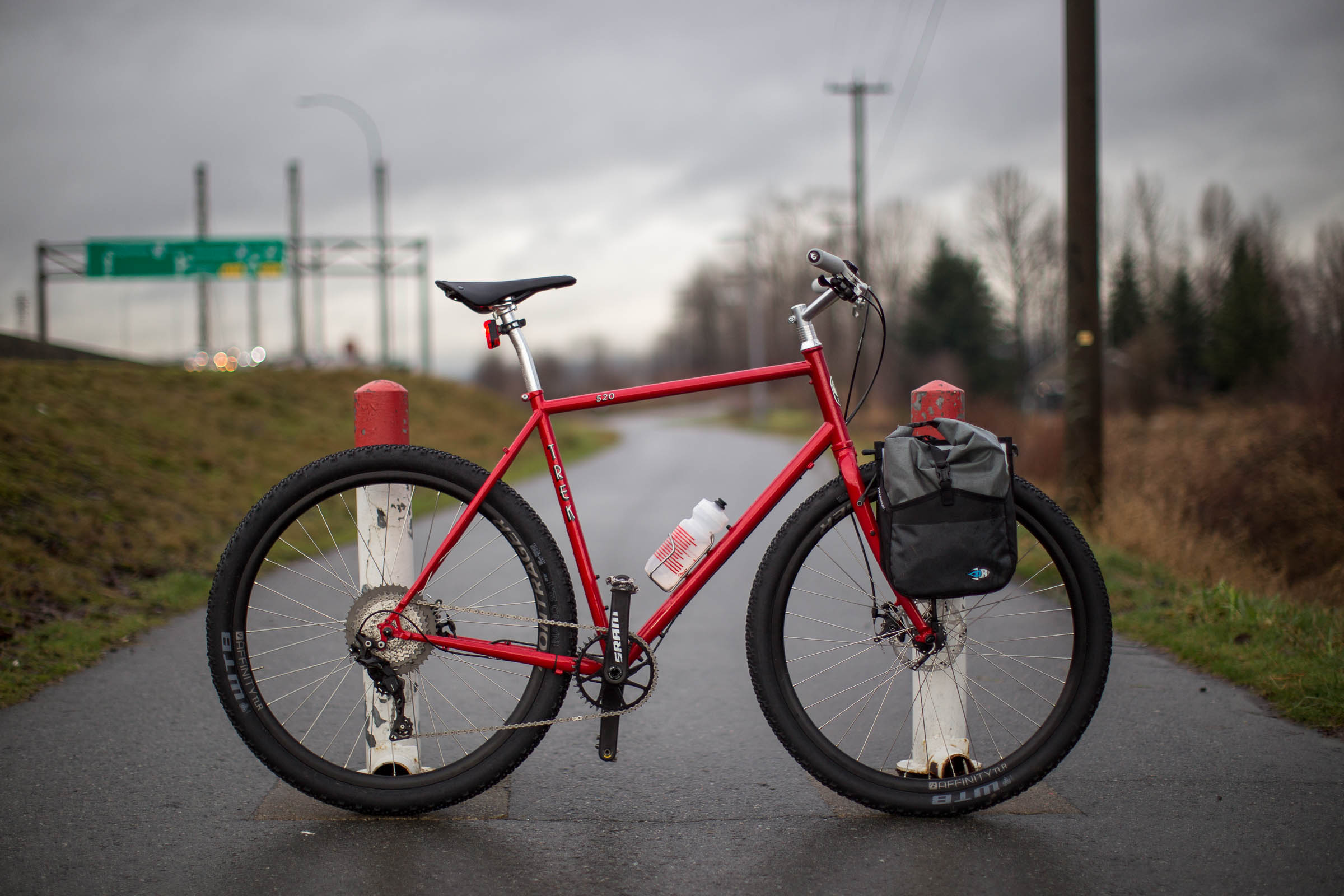
So far, I’ve mostly been commuting to work on the 520, which is a 60km round trip on paved bike paths, gravel trails, and road. It performs exactly how I envisioned. The flat bar conversion puts me in an upright position, the high volume 29″ tires keep me rolling quickly, and the steel frame is comfortable yet still handles loads fine.
Outside of commuting, I’ve tackled tame singletrack and successfully navigated my way through shorter sections of the chunky horse trails that are littered throughout Maple Ridge. I don’t want to throw the stock Trek 520 build under the bus, but I’m willing to bet I wouldn’t be riding this type of terrain on drop-bars. With that said, my take on the 520 is very far from the stock version, which is a traditional touring bike. Imagine if Trek stocked a flat bar, big tired 520.. now that’d be something.
From Touring to Cruising
Although I’ve been quite happy with the conversion as a whole, I’ve noticed a few quirks that might answer some questions for those interested in pursuing a similar project. Traditional touring bikes are typically designed with seated pedalling in mind, which translates to slack seat tube angles. Personally, I enjoy the upright position; I have a good visual of what’s going on around me, and I’ve noticed I have less pressure in my hands, but there’s been a clear tradeoff. When paired with my setback seatpost and flat bars, I feel a pretty significant lack of power. I’m sure I could comfortably spin all day long, but I’m not getting anywhere that quickly.
There’s likely a lot more at play here, but it’s a good first step in learning more about flat bar conversions and whether or not they make sense. And it’s something I hope to pursue in great depth and eventually report back on. Maybe deep down I really just want a 1986 Specialized Rockhopper, which isn’t really too far off from my 2020 Trek 520.
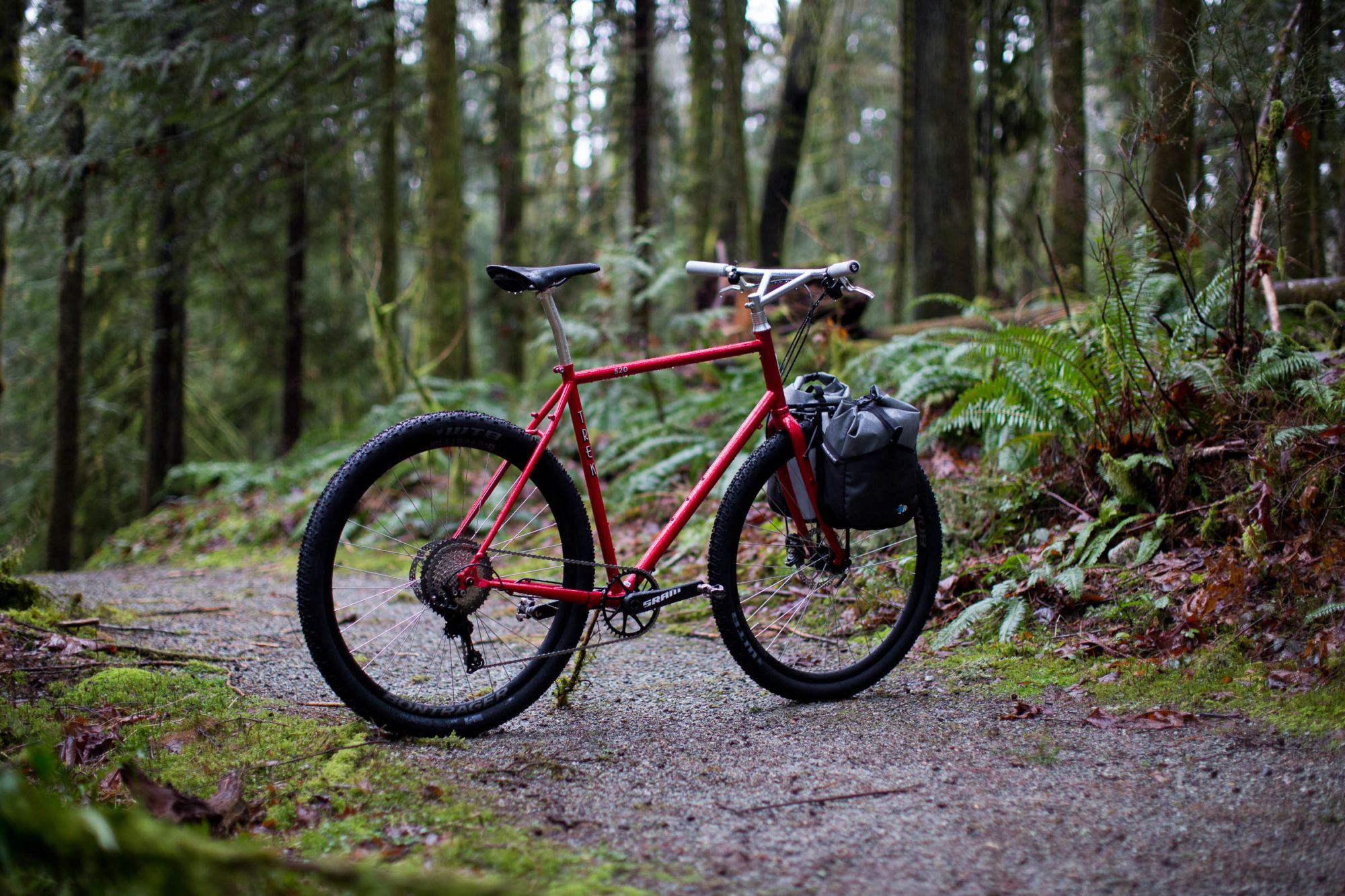
I’ve actually been so impressed with the Trek 520 that it will be assisting in a few upcoming gear reviews, including some bags and wheels. It’s not perfect, though. I would have preferred thru-axles, the rear brake caliper lacks adjustment due to its position, and the fork is aluminum, not steel. The complete build comes with segmented housing, so lacks the necessary cable guides for a clean setup.
I’m impressed that the 520 can fit 29 x 2.1″ WTB Nano tires, which work great for a wide mix of riding. I was also able to size up to a 60cm frame, since the flat bar conversion required some extra length, which gives me a massive main triangle to work with. The large Porcelain Rocket 52hz Road frame bag fits like a glove. Of course the 520 is outfitted with all the necessary mounts, including rack, fender, and bottles bosses. And the complete 520 ships with some pretty decent racks, both front and rear.
Wrap Up
My first ride on the 520 didn’t go as planned. I imagined myself racing along my usual route to work, the Golden Ears mountains to the north, cranberry bogs rushing by as I navigate my way through the seemingly endless network of gravel dyke paths that link Maple Ridge and Port Coquitlam together. Instead, I got a flat, my first non-tubeless flat in several years, and had to fix that on the side of a busy highway. It is now set up tubeless.
Although I opted to build up the latest Trek 520 frame, a similar setup could easily be created by finding a 90s mountain bike in good condition and swapping a few bits around. Purchasing a new bike just made it that much easier to include modern components with little to no fuss. I’ve been enjoying my commute more now that I’m not hauling 27.5+ tires around, and I expect lots more casual urban exploration rides in the near future.
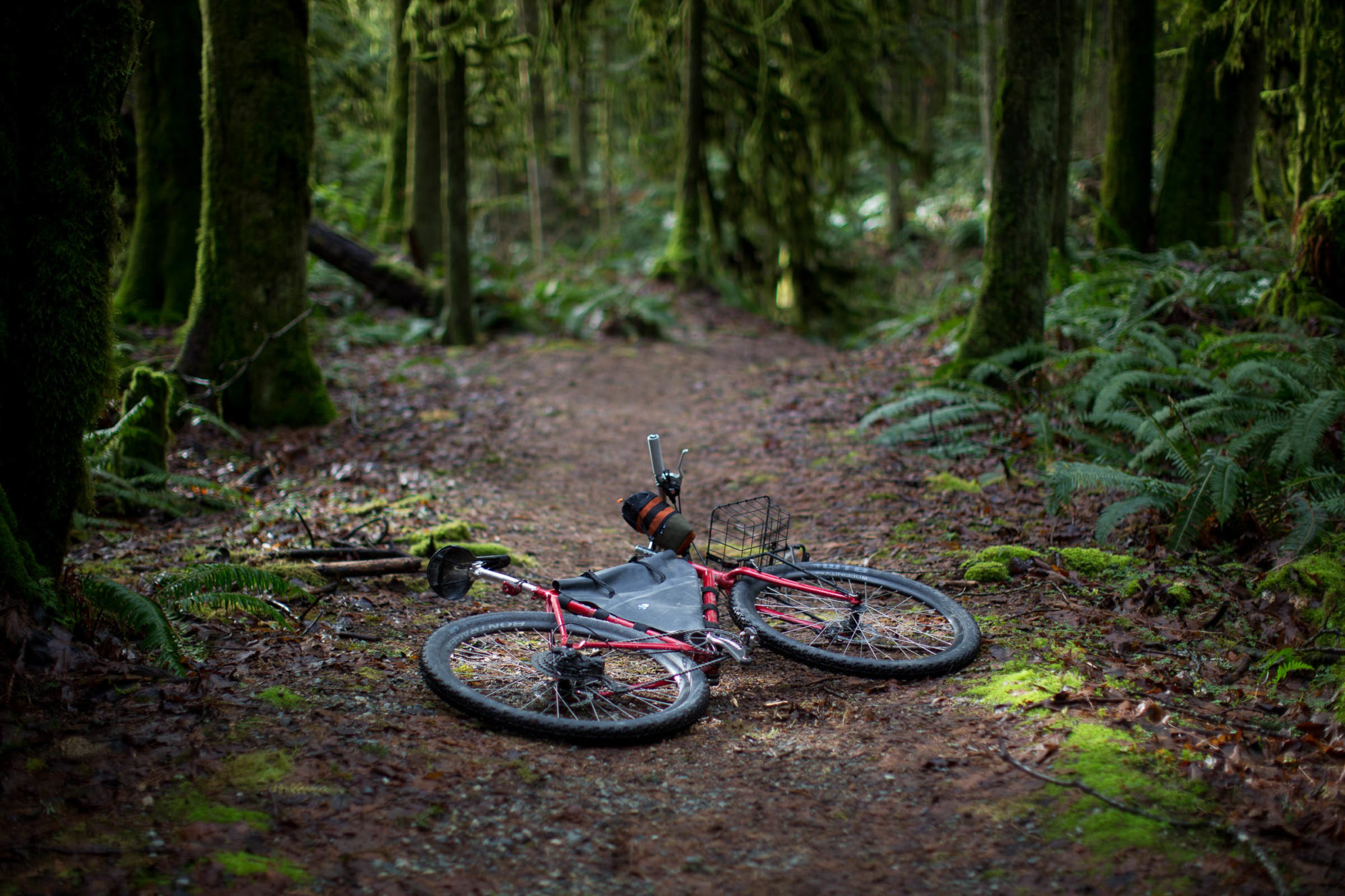
Please keep the conversation civil, constructive, and inclusive, or your comment will be removed.








